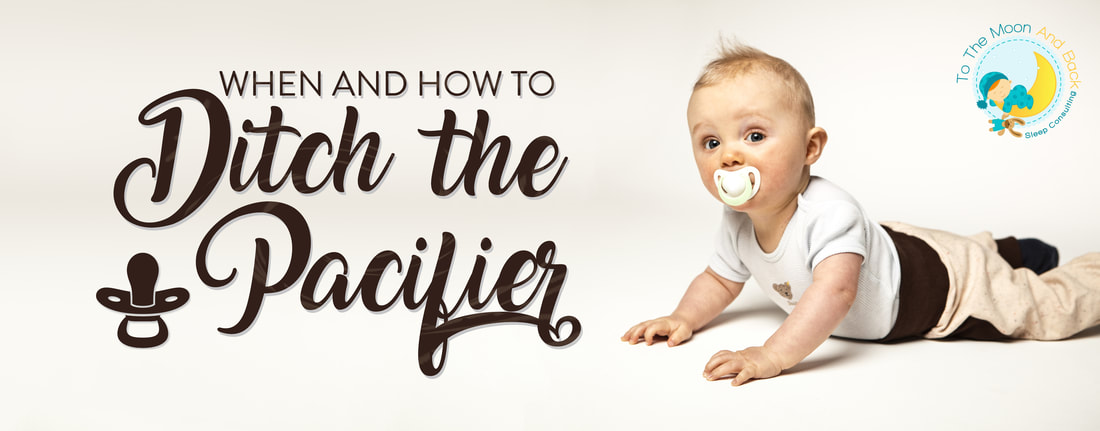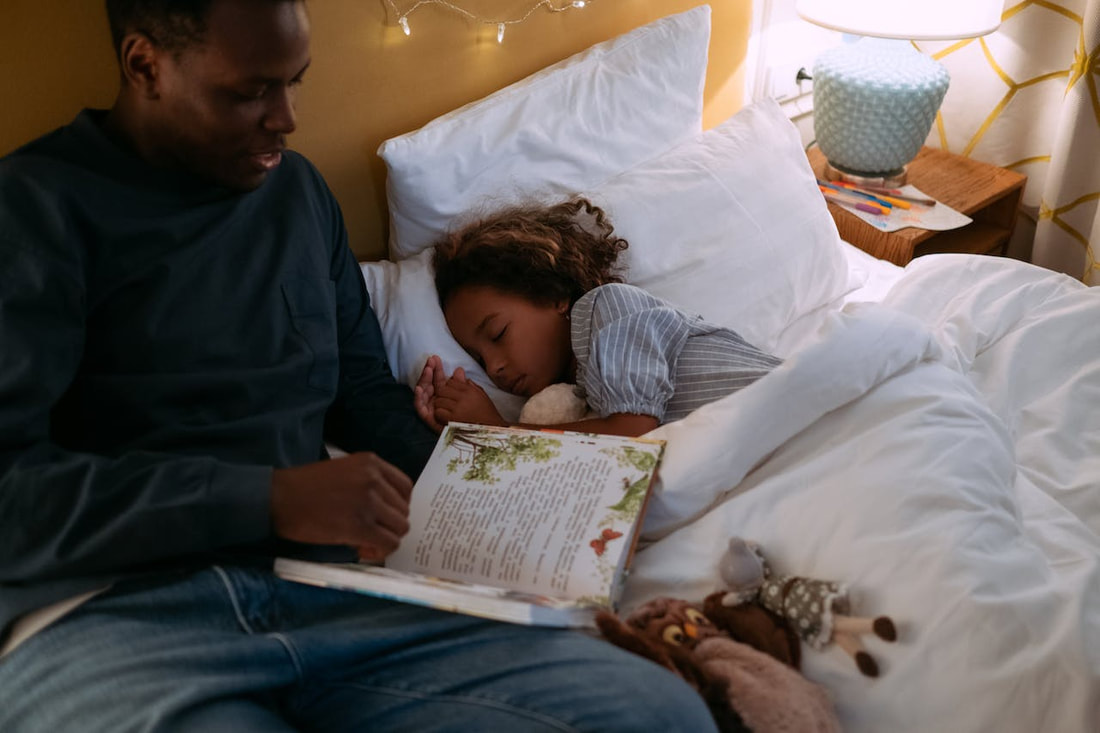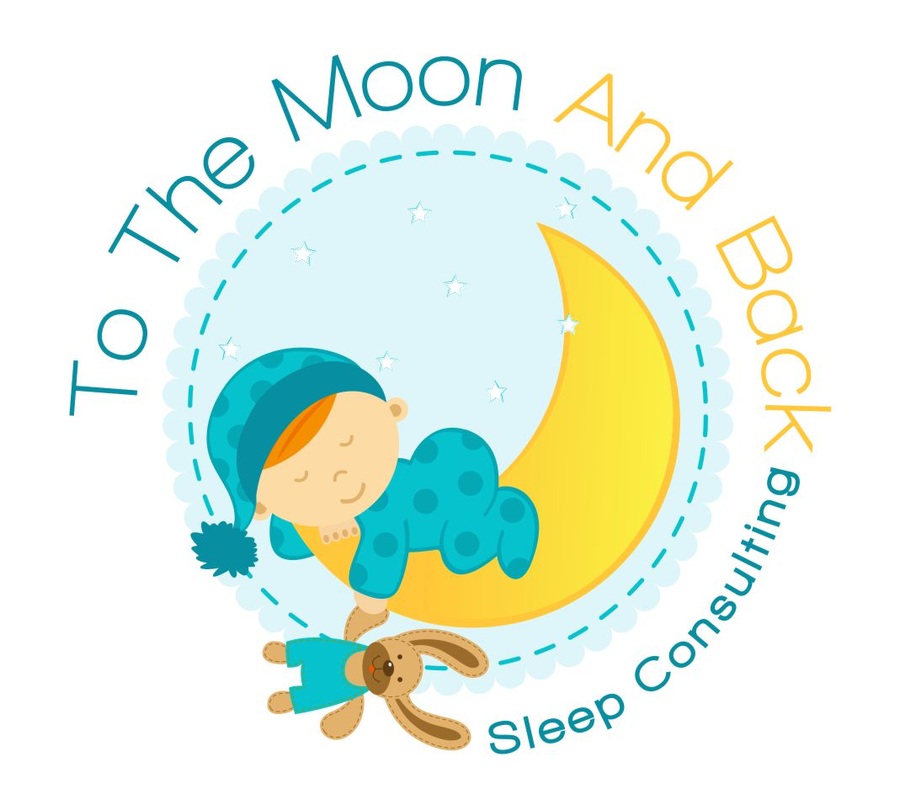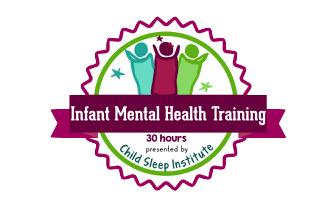|
Ensure a smooth transition when moving from crib to bed with these practical tips. Learn how to prepare, establish routines, and encourage independence. Transitioning your child from a crib to a bed is a significant milestone. This change can be quite turbulent for both parents and children. To ensure a smooth transition, it's important to plan and prepare carefully. Here are some tips to make the process easier and less stressful for everyone involved.
Understanding the Right Time for the Move The right time for moving from crib to bed varies for each child. Generally, you should wait until as close to three years old as possible to ensure that your child is developmentally ready for this transition. Look for signs like your child attempting to climb out of the crib, showing interest in beds, or outgrowing the crib. These indicators can help you decide when it's time to make the switch. Preparing for the Transition Involve Your Child in the Process. Including your child in the preparation process can make them feel more comfortable and excited about the change. Let them help pick out their new bed, bedding, and even the decor for their room. This involvement gives them a sense of ownership and control, making the transition smoother. Create a Safe Sleeping Environment Make sure the new bed is safe for your child. Choose a bed with rails to prevent falls, and place the bed on a soft surface like a rug or carpet. Remove any hazards from the room, such as sharp objects, small toys, or cords. Additionally, consider using a nightlight to provide a sense of security during the night. Establishing a Consistent Routine A consistent bedtime routine is crucial when moving from crib to bed. This routine helps signal your child that it’s time to sleep and can make the transition smoother. Here are some steps to consider:
Dealing with Resistance and Setbacks It's normal for children to resist moving from crib to bed or to experience setbacks. Here are some tips to handle these challenges. Be Patient: Transitioning from a crib to a bed is a big change for your child. Be patient and understanding if they resist or take time to adjust. Offer comfort and reassurance to help them feel secure. Be Consistent: Consistency is crucial during this transition. Stick to the bedtime routine and the new sleeping arrangement. Avoid giving in to requests to sleep in the crib or your bed, as this can create confusion. Address Fears: Your child may experience nighttime fears during this transition. Use a nightlight, provide a favourite stuffed animal or blanket for comfort, and reassure your child that they are safe. Avoid introducing new fears by keeping the environment calm and secure. Additional Obstacles: While moving from crib to bed is a significant transition within the home, there are times when families may face larger moves, such as relocating to a new city or province. For those considering long distance moving in Alberta, hiring professional movers can make the process much easier. This can be especially important when transitioning from a crib to a bed, which is already a big change in your child's life. Hiring movers allows you to relocate with minimal effort, focusing your energy on helping your child adjust to their new environment and sleeping arrangements. Make sure you find Alberta professionals who are experienced in relocating families and understand the challenges of such periods. Encouraging Independence Moving from crib to bed is an opportunity to encourage independence in your child. Here are some ways to promote this. Allow Choices: Give your child choices related to their new bed and bedtime routine. Let them choose their pajamas, bedtime stories, or a stuffed animal to sleep with. These choices empower your child and make them feel more in control. Encourage Self-Soothing: Teach your child self-soothing techniques to help them fall asleep independently. This can include holding a favorite toy, using a nightlight, or listening to soft music. Gradually reduce your involvement in their bedtime routine to promote independence. Monitoring and Adjusting Once your child has transitioned to a bed, continue to monitor their sleep patterns and adjust as needed. Here are some tips for ongoing support. Observe Patterns: Pay attention to your child's sleep patterns and behaviours. If they have difficulty falling asleep or wake up frequently, consider adjusting the bedtime routine or environment. Make Adjustments: Be flexible and willing to make changes if needed. This might involve adjusting the bedtime schedule, changing the sleeping environment, or revisiting the bedtime routine. Seek Professional Advice If Needed: If your child continues to have difficulty adjusting or experiencing sleep issues, consider seeking advice from a sleep specialist. They can provide guidance and support to help your child develop healthy sleep habits. Celebrating the Milestone Transitioning from a crib to a bed is a significant milestone for your child. Celebrate this achievement to reinforce positive feelings about the change. Here are some ways to celebrate:
Good Luck Moving from Crib to Bed Moving from crib to bed is an important transition for both parents and children. By preparing in advance, establishing a consistent bedtime routine, and addressing any challenges with patience and understanding, you can ensure a smooth and successful transition. With these tips, you can make the move from crib to bed a positive and rewarding experience for your child. Photo via Pexels  Once your baby reaches six months old, nighttime feedings often become less about nutritional necessity and more about comfort and habit. This is an ideal time to begin transitioning your baby’s calorie intake from night to day. Understanding the biology of how a baby’s body regulates calorie needs can help make this transition smoother and ensure that your baby continues to thrive. The Role of Caloric Intake in Baby’s Growth Biological Basis of Caloric Regulation Babies are excellent at self-regulating their calorie intake. Research shows that, much like adults, if they consume fewer calories at one point in the day, they tend to compensate by eating more at another time to meet their energy requirements. This innate ability is crucial as it helps maintain their growth and development trajectory. Caloric Needs and Development As infants grow, their energy needs per pound of body weight decrease, but the total amount of calories they need increases as they get larger and more active. By the time a baby is six months old, they are typically ready to start solid foods, which helps them meet their increasing nutritional demands. Transitioning Nighttime Calories to Daytime Step 1: Calories Missed at Night equal Calories Made Up During the Day When we begin to sleep train, it is often recommended that we reduce or eliminate all nighttime feedings. This will help ensure that the baby is not confused by the new expectations in the night and learns to sleep through without consuming calories. Eliminating nighttime feeds often concerns parents, but the reality is that the baby’s body will demand this calorie deficit to be made up the next day. Usually through more oz in a bottle, a more extended nursing session or more solid food at each meal. It’s not about pulling nighttime feed but more about reorganizing calorie intake. Step 2: Increase Daytime Feeding Opportunities Offer more frequent daily feedings to compensate for the reduced calorie intake at night. This can include more opportunities to breastfeed or bottle-feed and introducing nutrient-dense solid foods if your baby is ready for them. Step 3: Observe and Adapt Monitor your baby’s response to these changes. Look for signs of hunger and fullness, and be flexible in your feeding schedule. Babies may need time to adjust their hunger cues, so pay close attention to their needs. Step 4: Establish a Consistent Routine As your baby begins to adapt, establish a consistent daytime feeding routine. This helps set their internal clock to expect nourishment during the day rather than at night, aiding in better sleep patterns for both babies and parents. The Science Behind Calorie Shifting The concept of shifting calorie intake is backed by understanding that a baby’s metabolic rate is adaptable. During the first year of life, an infant’s metabolic rate is highly responsive. This adaptability ensures they can meet their energy needs through varying feeding patterns. As nighttime calories decrease, their body adjusts to absorb and utilize more nutrients during the day. This is why consistent daytime feeding becomes crucial in maintaining adequate growth and nutritional status. Ensuring Adequate Nutrition As you work on transitioning your baby’s feeding schedule, it’s essential to ensure they receive a balanced intake of nutrients. If you’re introducing solids, include a variety of foods to cover the nutritional spectrum, such as iron-rich foods, which are important at this stage of development. Conclusion Transitioning your baby from night to day feedings is not just about reducing nighttime interruptions — it’s about aligning their eating patterns with their natural developmental changes. By understanding the biological science behind calorie regulation and providing appropriate nutrition during the day, you can help facilitate this transition smoothly, ensuring your baby continues to receive the energy they need to grow healthy and strong. References:
AuthorErin Neri - Certified Pediatric Sleep Consultant and Owner of To The Moon and Back Sleep Consulting since 2016. Before I get rolling here, let me say that I am not anti-pacifier. I mean, what mother could be? We’ve all been saved from a major baby meltdown by the quick introduction of a dummy into a baby’s mouth at the right moment. Maybe they missed their sleep window by a little bit and were getting a bit cranky; perhaps they got an unexpected bump on the head, or you had to swoop in and take the dog treat out of their mouth. Just before they go into a tantrum, in goes the pacifier, and like magic, all is well. Pacifiers have benefits beyond preventing tantrums, as well. The AAP found that pacifiers can reduce the risk of SIDS, possibly due to the fact that baby has a more challenging time burying their face into soft bedding if they have a pacifier sticking out of their mouth. So, given that very substantial and necessary consideration, I’m making the following recommendations based on the supposition that your baby is over a year old. That doesn’t mean this is irrelevant if your little one’s younger than that, but just make sure you’ve carefully considered the pros and cons of taking away the pacifier before you make a decision. So here’s the conundrum from a sleep expert’s point of view: pacifiers can become a problem when it comes to sleep. If a baby’s accustomed to falling asleep with a pacifier in, it almost always wakes up in the night after it’s fallen out. It kicks up a fuss until mom gets up, finds it, and pops it back in its mouth. So, first off, let’s look at why babies can’t just fall asleep with a pacifier in and then peacefully sleep through the night. Then, we can look at some strategies for getting rid of the pacifier if you and your baby are ready to take the plunge. Sleep, for babies and adults alike, comes in cycles. Many of us are under the assumption that we fall asleep at the start of the night, go into a deeper sleep as the night goes on, and then gradually come out of it as the morning rolls around. It’s true that we go from light sleep to deep sleep and then back again, but it happens several times a night, depending on how long you sleep. For adults, a full cycle typically takes between 90 and 120 minutes. For a baby, it’s closer to 50. Suppose your baby won’t sleep at bedtime without a pacifier in their mouth. In that case, there’s a distinct possibility that they rely on that pacifier to sleep. When they get to the end of a sleep cycle, they get into that very light stage of sleep and might actually wake up, at which point they’re still tired, but they might have trouble getting back to sleep because “Hey! Where’s the pacifier? I can’t get to sleep without my pacifier!” Suppose they can’t find it or haven’t figured out how to put it in on their own yet. In that case, they’re going to get upset because they can’t get back to sleep, and they’re going to start crying for someone to come and rectify the situation. And that, right there, is the definition of what we in the sleep consulting field call a “sleep prop.” Sometimes, it’s feeding, sometimes it’s rocking, and sometimes it’s some crazy combination of a bunch of things, but essentially, it’s something that babies depend on to get to sleep that they can’t provide on their own when they wake up in the night. More than anything, that’s the secret to sleeping through the night. Getting rid of sleep props is, hands down, the most critical component to getting your little one sleeping peacefully from the time you put them to bed until they wake up, happy and refreshed, in the morning. So, if you’re reading this and thinking, “That’s IT! That’s exactly what’s happening with my baby!” you’ll probably want to take steps to get rid of that pacifier. I have a few tips to get you through the process quickly and peacefully. When it comes to breaking bad habits, I’m a cold turkey advocate, and this situation is no different. Toddlers do better with absolutes than with moderation, so my advice to parents is almost always to pick a day to make the change, explain it to your little one, and then toss all the pacifiers into the trash. Toddlers can often adjust to new situations remarkably easily so long as things are clear and consistent. So don’t save one for emergencies or just-in-case scenarios. It will be too easy for you to fall back on the pacifier to get a quick solution if your baby is having trouble sleeping. Then you’ll just be causing confusion. Alright, you’ve made the decision, explained the situation to your toddler, and signed a mental contract with yourself that you’re not going to do it by half measures. You’re ready to go all in. What’s next? Now’s the time to flex those creative muscles and devise a plan. How are you going to spin this change in a positive way? Toddlers typically embrace the idea of growing into “big kids,” so marking it as a milestone can be a big help. Make sure to present the change as a very exciting and joyous occasion. This is a bit of a dirty parenting trick. Still, you could round this off by introducing a “Pacifier Fairy,’ by telling your toddler that the Pacifier Fairy is coming to collect all of their dummies and, in exchange, will leave them a special surprise. Whether that’s something your little one will embrace, I leave it up to your discretion.  One quick side note here: I’ve seen a lot of situations where parents with a toddler and a newborn or younger sibling in the house will give the older baby’s pacifiers to the younger one. On its face, this seems like a good idea, but it can breed some resentment from your toddler when they see their younger sibling sucking on their pacifier. If you can, get rid of your toddler’s pacifiers and get different ones for the younger child. So, you’ve laid the groundwork, your little one has grasped what’s going on, and the house is now pacifier-free. Now, you’ll want to brace yourself because, in about 99% of all cases, your toddler will go a little bit bananas while they adjust to the new reality. It’s nothing to be concerned about; we all get a little irritable when we break a habit, but I want you to know that it’s rarely a seamless transition. There’s going to be some pushback. When that pushback hits, and your toddler starts to lose it a little, my advice is to distract, distract, distract. Keep some of their favourite treats on standby, have the iPad cartoons ready, and quickly turn their attention to something else when they start to fuss about the lack of a pacifier. You can acknowledge their frustration and offer them as much comfort and support as needed but don’t apologize or give in. Remember that you’re the authority figure here. If you’ve decided that the pacifier is a thing of the past, that’s the way it is. Giving them a pacifier at this stage is only going to reinforce the idea that crying or fussing is an effective tool for getting their way. Every toddler is obviously a unique individual, so use these guidelines in conjunction with your intuition. Within a few nights, maybe a week, your little one should be Binky-free, and your whole family should enjoy the benefits of those glorious, sleep-filled nights. AuthorErin Neri - Certified Pediatric Sleep Consultant and Owner of To The Moon and Back Sleep Consulting since 2016. Discover how to make bedtime a breeze with our guide. Expert tips for adapting children’s familiar sleep routines to your new home! Are bedtime battles turning your move to a new home into a sleepless saga? Fear not, weary parents! In this delightful guide, we're diving headfirst into the enchanting world of adapting children's familiar sleep routines to your brand-new abode. Moving house with little ones can be difficult, but fret not – we've got your back! We'll show you tips for adapting children's familiar sleep routines to your new home. Say goodbye to restless nights and hello to the land of peaceful Zzzs – let's begin this enchanting adventure together! Preparing for the Move To Your New Home Firstly, let's talk about the art of communication. Share the excitement and explain why this new chapter in your family's story is a thrilling one. Remember, they're part of the team, and their input matters! Now, when it comes to packing, involve your mini sidekicks in the process. Therefore, let them choose their favorite toys or items to carry with them on this fantastic voyage. Their sense of ownership will also help them feel more connected to the relocation and less like passengers on a spaceship. Furthermore, let's chat about schedules. Plan ahead and try to keep daily routines intact as much as possible. Hiring movers is the way to go when you're moving to Canada. If you have assistance with your relocation, you can spend more time guiding your children through the process. Familiarity is your secret weapon in taming the moving monster. A sense of predictability can soothe those pre-move jitters and provide stability amid the whirlwind of change. Advice for Moving with Kids to Your New Home Timing is everything; finding that sweet spot in your family's schedule can make all the difference. So, opt for a period when school or other routines are less demanding, minimizing disruptions and ensuring your little adventurers are ready for the journey. Now, let's talk about selecting child-friendly moving services. Look for companies with family moves experience, kid-friendly amenities, and maybe even some snacks to fuel their enthusiasm. Overall, the right-moving team can turn your move into a remarkable voyage of discovery. Lastly, don't forget the essentials bag – your golden ticket for the first night in the new home. Pack it with all the treasures your children hold dear: their favorite stuffed animals, beloved bedtime stories, and maybe even a surprise treat. This bag is like Mary Poppins' carpet bag, holding everything they need for a cozy, reassuring night's sleep in their new surroundings. So, as you navigate this kid-centric moving adventure, remember that timing, child-friendly movers, and a well-packed essentials bag are your secret weapons. Arrange Your Children’s Room and Create a Comfy Sleep Environment Unpacking and arranging the children's rooms: make this task a priority, transforming their new space into a haven of comfort and familiarity. Unearth and place their treasures in their special spots, fostering a sense of belonging from day one. Now, speaking of treasures, let's maintain that precious familiarity with bedding and sleep essentials. So, keep their beloved blankies, cozy PJs, and trusty stuffed companions close at hand. The scent of home is often wrapped in these comforting items. Let's not forget to establish a safe and comfortable sleep environment. Make sure their cribs or beds are set up with utmost care. Check for any potential hazards and baby-proof the room as needed. Soft nightlights can banish those bedtime monsters, and blackout curtains can also help create a peaceful, uninterrupted slumber. Rebuild Their Sleep Routines Now, let's bring back those beloved bedtime rituals and routines. Storytime, lullabies, and toothbrushing adventures – these cherished traditions weave a sense of comfort and predictability into your children's evenings. Reintroduce them with enthusiasm, turning bedtime into an enchanting journey once again. But remember, Rome wasn't built in a day, and neither are perfect sleep routines. Gradual adaptation to the new sleep environment is key. Start by introducing familiar elements, like their favorite pillow or nightlight. Over time, incorporate new elements specific to your new home, making the transition seamless and exciting. Manage Relocation Challenges Acknowledge their worries, encourage exploration, and be their compass while adapting children's familiar sleep routines to your new home. Show them that, like brave explorers, they can conquer any fear that comes their way. Next, dealing with disruptions and waking up at night is challenging. As you sail through this transition, expect a few waves of restlessness. Stay the course, providing comfort and reassurance when those nighttime squalls hit. A little extra cuddle or a soothing lullaby can work wonders to settle those stormy seas. Above all, be the lighthouse, providing a beacon of emotional support during the adjustment period. Offer a safe harbor for their feelings, whether excitement, sadness, or uncertainty. Let them know you're here to listen, understand, and embrace their emotions as they journey through this new chapter. Maintain Consistency in Their Bedtime Routine A well-rested captain makes for a smoother voyage, so lead by example. Show your little ones the importance of a bedtime routine by sticking to one yourself. Now, let's talk about monitoring and adjusting sleep routines as needed. Just as a skilled sailor adjusts the sails to changing winds, be vigilant and flexible. Keep an eye on how your children adapt and make tweaks as necessary. Whether it's bedtime or naptime, your ability to adapt will ensure smooth sailing through the night. But here's the cherry on top: celebrating small victories and milestones in the new home. Every night of peaceful slumber, every morning, they wake up with a smile – these are the moments to cheer and cherish. Acknowledge and applaud these little triumphs; they'll build a sense of accomplishment and confidence for your little adventurers. Final Thoughts On Ways for Adapting Children's Familiar Sleep Routines to Your New Home
In the grand adventure of adapting children's familiar sleep routines to your new home, patience and understanding are your trusty companions. By following the steps outlined in this guide, you can transform the challenges of relocation into opportunities for growth and bonding. Remember, your support, consistency, and love will guide your little ones through the exciting journey of bedtime in their new home. Sweet dreams await in your new home! Photos used: Pexels Pexels Pexels Pexels |
To The Moon and Back Sleep ConsultingProviding families the tools & support they need to get their little ones sleeping through the night and napping like champs! Everyone has more fun when they are well rested! Visit Wollino - Discount Code: TOTHEMOONANDBACK10
Browse
All
|
All information provided on this website, including texts, images, and other materials, are for informational purposes only and should not be considered a replacement for assessment or treatment by a healthcare provider.
© COPYRIGHT 2016-2024 TO THE MOON AND BACK SLEEP CONSULTING. ALL RIGHTS RESERVED. WAKING GIRL WEB DESIGN
© COPYRIGHT 2016-2024 TO THE MOON AND BACK SLEEP CONSULTING. ALL RIGHTS RESERVED. WAKING GIRL WEB DESIGN















 RSS Feed
RSS Feed








